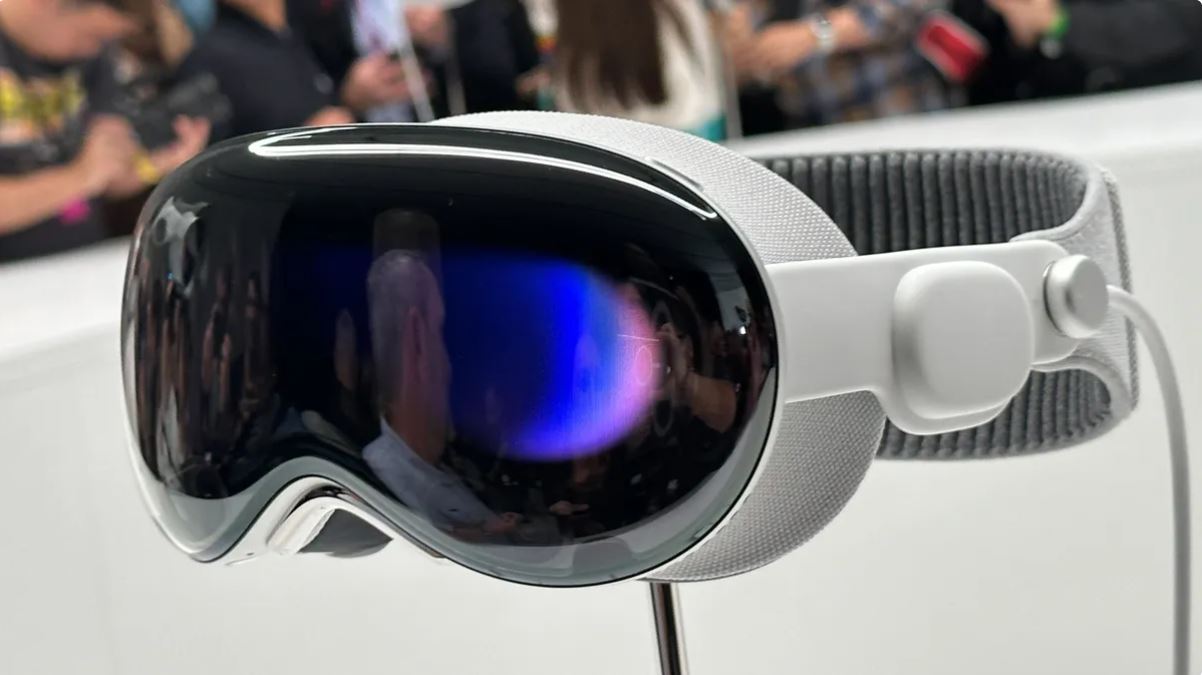Apple has unveiled its VisionOS, a groundbreaking operating system for mixed reality (MR) experiences.
It debuted in June 2023 alongside the reveal of the Apple Vision Pro headset, marking the company’s first foray into the consumer MR space. VisionOS builds upon the foundation of existing Apple operating systems like macOS, iOS, and iPadOS, offering a familiar yet innovative interface for spatially interacting with the digital world.
Read also: Unveiling the Apple Vision Pro
Core Features of VisionOS
Apple’s VisionOS is a groundbreaking operating system for mixed reality (MR) experiences. VisionOS is built from the ground up for spatial computing, unlike traditional operating systems. It understands the physical space around you and allows interactions with digital elements anchored to real-world locations. Imagine placing a virtual object on your coffee table or pinning a note to a physical wall—VisionOS facilitates these interactions seamlessly.
Beyond the conventional mouse and keyboard interfaces is VisionOS. It provides a range of simple control techniques for interacting with the digital environment. The two main techniques are eye and hand tracking, which let users choose items and control them with only a glance or a hand gesture. Additionally included are voice commands, providing still another option for hands-free engagement. Because of the natural and intuitive user experience offered by this combination of control techniques, people can engage with the digital world more easily.
VisionOS leverages the power of the existing Apple ecosystem. Apps designed for iPhone and iPad can be adapted to run on VisionOS with minimal modifications. This new development ensures a broader range of content and experiences are readily available from the platform’s launch. Features like Handoff and Universal Clipboard allow users to seamlessly switch tasks between their Apple devices and the Vision Pro headset. This level of integration creates a cohesive user experience across all Apple devices.
Accessibility is a core tenet of Apple’s design philosophy, and VisionOS is no exception. The system offers alternative control methods like head pointer control for users who might not be comfortable with eye or hand tracking.
Additionally, voice commands can be used extensively for navigation and interaction, ensuring that a broader range of users can enjoy the benefits of MR experiences regardless of their physical limitations.
In terms of immersion, VisionOS provides flexibility. Through augmented reality (AR), users can bring 3D items into their actual location, interact with content via a window on a standard display, or completely submerge themselves in a virtual environment. There are different use cases and preferences for each level of immersion. VisionOS can meet your demands whether you want to explore a fully immersive virtual environment or read your email in a virtual window.
Benefits and Potential Applications
VisionOS isn’t just about a new way to interact with technology; it has the potential to revolutionise how we work, learn, and play. Here’s a glimpse into the exciting possibilities:
Imagine holding virtual meetings where colleagues appear as life-sized avatars in a shared virtual space, eliminating the limitations of geographical distance. Collaborate on design projects by manipulating 3D models in a virtual environment, fostering better understanding and communication. VisionOS has the potential to streamline workflows and boost productivity across various fields.
Step back in time and explore the pyramids of Giza in a virtual environment, or perform complex medical procedures in a simulated setting with minimal risk. VisionOS can offer immersive and interactive learning experiences that traditional methods can’t match. Imagine students dissecting a virtual frog in biology class or architects visualising a building in its entirety before construction begins. The possibilities for enhanced learning and training are vast.
Prepare to be transported to an expansive virtual world unlike anything you’ve experienced before. Explore breathtaking landscapes and battle mythical creatures, or relax and watch a movie in a fully immersive environment. VisionOS has the potential to transform the entertainment landscape, offering unparalleled levels of engagement in gaming, movies, and other experiences. The lines between reality and the virtual world will blur, creating entirely new avenues for entertainment.
Looking Ahead
VisionOS is still a young platform with immense potential for future development. While the initial focus might be on gaming and entertainment, Apple’s focus on developer tools and a robust ecosystem could lead to groundbreaking applications across various industries. As the technology matures and the app library expands, VisionOS has the potential to reshape how we interact with the digital world, blurring the lines between the physical and virtual realms.
It’s important to note that VisionOS is a new platform, and its long-term success will depend on several factors. These include user adoption, developer support, and the continued innovation of the underlying hardware.
However, VisionOS’s initial launch marks a significant step forward in the field of MR, and its potential to transform the way we interact with technology is undeniable.














